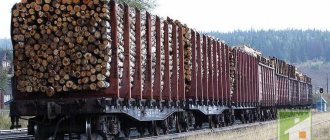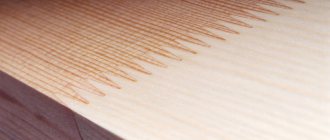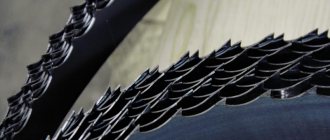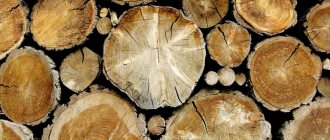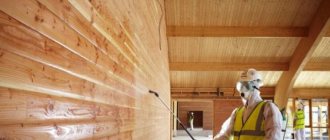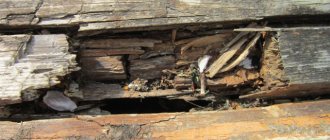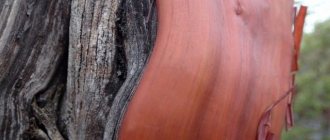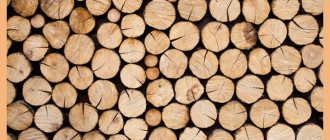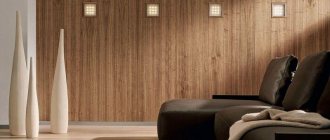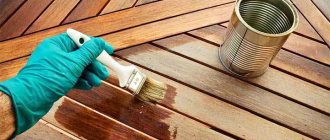The appearance of a large number of modern products on the building materials market does not reduce the population’s attachment to wooden buildings and products.
The tree can serve for a long time and flawlessly after carrying out preventive measures. Processing wooden products using one or more technologies guarantees comprehensive protection against many external influences.
Threat factors for the quality of wooden products
During operation indoors or outdoors, wooden materials are influenced by many circumstances. External products are subject to the following influences:
- solar radiation;
- attack by steam and directly by water from sediments;
- infection by fungi, bacteria, insects;
- mechanical loads.
In the interior space of buildings, aggressive influences are less noticeable, but they also play a significant role in maintaining the good performance properties of wood.
To preserve the properties of wooden products, different methods are used: chemical, mechanical (physical), complex processing. Some techniques can only be performed in workshops with special equipment, while others can be completely implemented at home.
Hewing logs for two and four edges
The log is cut into two edges in the same sequence as for one edge. The width of the sides being cut must be the same, otherwise the log will turn out to be one-sided. Curved logs in front of the hew should be laid with the convex side up. The log is cut into three edges in the same way.
A log with four edges, or a rectangular beam, is cut like this. On the non-butt side of the log (in the cut), a circle is drawn using a compass. The diameter of the circle should be such that a beam with sides of the required size fits into it, after which the same circle is drawn on the butt side with a compass. Then mutually perpendicular lines are drawn through the center of the circle. If the ends of these lines within the circle are connected by straight lines, then we get a square with vertices 1, 2, 3, 4. Having marked the squares, lines or marks are punched through their vertices at both ends and they begin to cut the log into four edges, as before discussed above.
Ways to protect wooden surfaces
Applying chemicals to wood has been used since ancient times when science was unknown. For these purposes, vegetable oils, resins, tar, and natural protective tinting agents were used. On the modern market there are a large number of complex, highly effective composites that are used on a par with old products.
Chemical
Wood protection using chemical compounds is carried out by the following means:
- oils and similar substances;
- paint and varnish products;
- antiseptics;
- primers.
They produce compounds that have a combined effect on wood. As a result of treatment with such means, the product becomes resistant to almost any external influences of an everyday nature.
Oil
Oil for impregnating wood is extracted from sunflower, flax, teak and tung trees. Sometimes tar oil obtained from birch is used. The products are distinguished by good environmentally friendly qualities and create an effective protective cover, provided that the base is properly prepared, including thorough cleaning and mechanical processing.
Oils have good penetrating ability, create a beautiful artistic effect on the surface, and withstand temperature changes, including drops to negative values.
A product obtained from certain types of oils is drying oil, which has long been used and continues to be used for DIY wood processing. As a result of prolonged hardening, a natural polymer layer is formed on wooden surfaces, preventing the penetration of moisture and microbes.
An effective technique that allows you to obtain a high-quality surface comes down to distributing a thin layer of drying oil in several stages, between which the product should be in a clean, dust-free room. With this type of work, the wood will not become dirty, the surface coating will not stick; and drying oil successfully polymerizes to form a clean film.
Wax
Wax is close in chemical nature to vegetable oils; it is also a type of simple lipids. Wax coatings are effective on wood products for home use. The resulting surface layer preserves the natural beauty of the wood, decorates furniture and doors between rooms.
Varnishes and paints
For the protective treatment of wood, varnishes and paints are often used, the range of which is varied, differing in composition, prices, and application methods. Conventional varnishes cover wood with a transparent film and are effective for use on home furnishings. A simple varnish layer will not withstand powerful weather conditions, but it has increased abrasion resistance, which is useful when applied to furniture and interior decoration.
Note! Special types of varnishes with a powerful water-repellent effect are intended for outdoor use. They are characterized by increased elasticity and do not tend to form cracks.
Wood paints must contain a color-forming pigment and some kind of solvent. If the pigment is dissolved in water, then you can work with such paint without fear. The only specific condition is that if there is excess moisture in the surrounding area, water-soluble paint will take a very long time to dry and may not adhere well to the surface of the wood.
Paints based on organic liquids dry much faster, but they only need to be processed using a respirator. Synthetic solvent vapors are toxic and can cause poisoning if inhaled. The protective layer formed by many paints demonstrates relative effectiveness when using products outdoors, because after some time, barely noticeable cracks may appear in it, capable of allowing moisture and microorganisms to pass through.
To improve the fixation of paint on a wooden base, it is advisable to first apply a primer, which in many cases contains antiseptics. In this way, you can prevent the proliferation of molds and microbes that cause rotting, and extend the life of the products. Multifunctional primers contain fire retardants that reduce flammability and the ability to support combustion of natural materials.
Physical
Natural wood has an inherent natural moisture content that is retained during the manufacturing of lumber. Water molecules are concentrated both in the core and in the outer layers of the trunks. If the wood is not properly dried during use due to moisture evaporation from the central layers, cracking may occur with the formation of both small and very deep cracks.
Drying under vacuum or without changing pressure can prevent damage to integrity. As a result of this physical treatment, it is possible to obtain wood with the required moisture concentration not exceeding 10% of the total mass.
Conventional drying without changing pressure is carried out with intensive ventilation of the workroom for 10-15 days. If the process is carried out in a vacuum, high-quality wood with the required moisture content and good external characteristics can be obtained in a couple of days.
Under natural conditions, wood can take months to dry.
Note! The maximum protective effect is ensured by heat treatment of wood using special equipment.
At the first stage, the material is heated in the absence of air at a temperature reaching 180 ℃. In this case, complete dehydration of the raw material occurs, the death of all microorganisms and fungi that previously lived in the tree. After intensive airless heat treatment, the raw materials are heated with steam at elevated pressure and temperatures reaching 240 °C.
The resulting wood has high strength characteristics and is free of biological contaminants. If desired, you can make thermal stoves with a similar effect in the courtyard of a private house. However, this is a costly business; it is justified only if it is necessary to carry out constant work with wood.
Combined
If production capabilities exist, wood is processed by combining several types of influences.
First, heat treatment is carried out, adding substances with antiseptic and fire retardant properties to the water vapor in the second stage. Under such conditions, they can penetrate deeply into the material, forming a protective environment there.
Then the wood is placed in a hermetic space saturated with chemical reagents, and the pressure is increased to 12 atmospheres. Under such conditions, vacuum impregnation is carried out; the resulting wood demonstrates high resistance to all types of influences.
A combined treatment, including vacuuming in an atmosphere saturated with chemicals, called impregnation, is considered one of the most effective methods of protecting wood.
Hewing logs on one edge
Before cutting begins, the log is placed on two wooden supports - churaks - and secured with corner brackets. The log is held more firmly when a triangular or semicircular hole (notch) is chosen in the linings. After this, at the ends of the log, using a plumb line, mark the plumb line, that is, draw vertical lines - risks. Along the top of these marks, rivets are made with an ax into which the cord is placed. One end of the cord can be held by hand.
The cutting is carried out along a debarked or unbarked log. If the log is debarked and blackened over time, then the cord is chalked or rubbed with chalk. If the log is not debarked, then rub the cord with chalk or remove the bark along the approximate line of the cord and beat the line with a cord, rubbed coal or a firebrand. On light wood, chalk is difficult to see. Having secured the cord, they approach the middle of the log, stand on the back side of the log, lift the cord so that it falls strictly vertically, that is, in the same way as the vertical lines were drawn at the ends. The lowered cord, hitting the log, shakes off chalk or coal, which remains in the form of a line. The log for one edge is cut along this line starting from the top to the butt, which does not cause scuffing. From the side of the cut, after 250-350 mm, several cuts are made, approximately to the depth of the cut. This allows the wood to be chipped and then trimmed, which speeds up the work. The original chips are removed up to the punched line, leaving the wood untouched up to 5 mm. After this, they finally clean it down to the punched line so that the wood remaining after the hewing has a clean vertical plane. During the work, the leg on the side of the face must be placed as far away from the log as possible to avoid the ax from rebounding.
Basic operations of mechanical woodworking
You may be interested in: Lithuanian industry: features and specifics
In order to give the workpiece the desired appearance, it must be processed with the necessary parameters. In practice, wood processing industries carry out dozens of operations of this type, many of them performed on the same multifunctional lines. Just processing wood on a lathe may involve boring, countersinking, drilling, reaming and other work operations. In a broader scope, you can imagine operations of a different format:
- sawing;
- cutting;
- trimming;
- grinding and polishing;
- planing;
- chiselling;
- milling;
- thicknessing.
New technologies in the production of wood products
Recent changes in this area are associated with the active introduction of automated and even robotic processing and assembly lines. Even the simplest circular machines today can be provided with CNC and other means of “smart” control, which improves the quality and speed of production processes. The operating principles of machine tools are also changing. For wood processing, large enterprises use laser machines, multifunctional four-sided modules with high-precision cutters, etc.
What wood is used in production?
You may be interested in:Motor oil production: characteristics, technology and manufacturing process
The modern woodworking industry works with blanks of various origins, which differ in technical, functional and aesthetic characteristics. These can be traditional species like oak and pine, or exotic ones - wenge, morado, rosewood, etc. About 30 species are in demand directly in Russia, most of which in one form or another find their place in construction. Nevertheless, each industry has its own requirements for blanks, which also determines the division of wood into classes. For processing, in particular, the classification of the material according to the qualitative state of the structure is important:
- Class III. The workpiece has an uneven color and layer pattern. Partial flaws and defects such as falling knots may be noted, but they are not of fundamental importance for reliability, from the point of view of the intended use. Another thing is that the commercial class of products made from such wood will be low.
- Class II. Uneven coloring and minor imperfections on the surface also appear. With proper processing, the manufacturer can obtain an externally decent material, but it is unlikely to count on high decorative properties.
- Class I. Smooth, solid and natural-colored workpieces that are in a suitable condition for almost all types of processing and areas of further use. Limitations are determined only by the characteristics of the tree species to which the workpiece belongs.
Popular message topics
- The works of Jules Verne
This year marks the 193rd anniversary of the birth of one of the most beloved novelists by boys, who predicted in his fantastic works for a long time the appearance of such - The accordion is a musical instrument.
We are all accustomed to considering the accordion an original Russian folk instrument. However, few people know that his life began not in Rus', but in Ancient China. True, at first the instrument had a different name, more in tune with that nation. - Tree (Elm)
Elm belongs to the trees of the Elm family. Asia is considered the birthplace of the tree. From where it spread to Siberia and the Volga region, to the Urals and the Caucasus, and to some European countries. Found in mixed forests,
Chemical treatment
One of the main disadvantages of wood material is its low service life, which is reduced in unfavorable operating conditions. It is to maintain viability while maintaining technical and physical properties that the chemical method of wood processing is designed. The production of wood products and its semi-finished products necessarily involves the organization of separate technological sections where a set of protective procedures is carried out.
It can come in a variety of forms, including paint coatings and impregnations. The processing means used also differ. For example, fire resistance of the material is given by means from the group of fire retardants, and the application of antiseptic substances prevents the development of harmful microorganisms, which, in turn, can trigger unwanted processes of the same biological destruction.
Hew the log roundly under one bracket with a constant cross-section
A round log under one bracket with a constant cross-section is cut like this. First, the log is cut into four edges, the width of which depends on the size of the round log. After this, the ends of the log are divided into four, six or eight equal parts, both vertically and horizontally. Then lines are punched along the entire length of the beam using a chalked cord. The formed corners are cut off with an ax to obtain the desired roundness, which is checked with a bracket or template with a semicircle made equal to the diameter of the log. After hewing, the round workpiece can be leveled by sharpening it, best with a grinder.
Round blanks are often used to decorate porches, verandas, gazebos, or to decorate platbands.
When working with an axe, you must follow safety rules; the log must be firmly secured to the supports. To do this, a groove is cut out in the linings, and the ends of the logs are cut off a little and everything is secured with a wedge and staples.
Do not use a dull ax as it will bounce off the wood and may cause injury.
Machining Equipment
As great a variety of mechanical woodworking operations is, the range of technical means by which these works are carried out is equally wide. The most popular are units for providing wood turning technology, during which cylindrical parts of the desired shape are obtained. The turning operation can also be performed manually, when the operator holds the working tool in his hands without using a holder, but most often modern machines of this type operate in fully automatic mode.
Other types of woodworking equipment include milling, sizing, jigsaw, circular and slotting machines. Again, manufacturers strive to combine several functions on one bed, so most factory units provide for the implementation of several operations - just change the operating mode of the electric motor and update the equipment.
